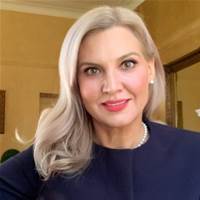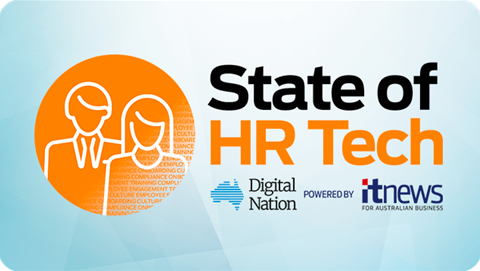The huge and rapid acceleration of digitalisation since the start of 2020 has thrown the issue of organisational digital fitness into harsh relief.

For Australia’s biggest businesses and its large government departments, it is not an encouraging story.
A global study by MIT CISR included local data from the MIT CISR 2021 Adapt Survey which found that 58 percent of Australian firms fail to provide their people with both the workplace technologies and the capabilities to work effectively in a digital world.
That is more than double the global figure of 27 percent, making it one of the worst results in the world.
iTnews Digital Nation interviewed a dozen C-suite executives both on and off the record and identified a range of issues holding Australian organisations back; from the lack of competitive tension to drive investments in technology, to a disregard for skills and capabilities, and a wider failure to develop a decision-making culture.
Some leaders we spoke with raised specific issues in their own industries.
The former CEO of a large utility for instance said the quality of leadership at board level in his sector was significantly to blame.
“Too many organisations are run by CFOs and boards with little strategic vision and too much of a focus on sweating the existing assets," he said.
Meanwhile, several CIOs we spoke to decried the impact of shadow IT, where business managers go around the IT department and implement their own technology.
On the flipside, other members of the executive leadership teams called out the failure of their organisations to increase their technology investments to match international competitors.
Teresa Sperti, the CEO of Arktic Fox, is sympathetic to all three schools of thought.
She is the former chief marketing officer of the charity World Vision and these days, helps organisations more effectively leverage their marketing technology investments by looking at both the tools and the culture.

According to Sperti, “As a country there are a lot of duopolies so there often isn’t the same level of competition that other global organisations in the US or the UK for instance experience.
"To really differentiate effectively they invest in higher levels of technology.
“We haven't seen the levels of technology investment that we've needed, or levels comparable to the situation overseas.”
Sperti says she has seen a change of attitude, though, in recent years.
“Over the past three to four years we've seen organisations really start to grapple with how to effectively operate in such a marketplace and most categories and most marketplaces are now becoming increasingly competitive.”
Evidence
Research by MIT CISR reveals the extent by which Australian companies lag their global peers in investing in their people to equip and empower them for digital businesses, and the cost of their tardiness.
The study, called Equipping and empowering the future ready workforce, by Kristine Dery, Stephanie Woerner and Cynthia Beath, defines a future-ready workforces as “the degree to which employees are empowered and capable of functioning productively in a digital business.”

The researchers studied two distinct ways companies are changing their workforces.
The first is the extent to which organisations equip their employees with the right digital tools for the work they do today and to redesign their work of tomorrow.
The second concerned how they empower and develop the people to work effectively in an increasingly digital workplace.
Rather than self-reporting, the 1300 organisations studied were placed into tiers based on a methodology developed by the researchers.
Dery told Digital Nation, “What's interesting is that when we looked at global firms, we still found that around between 70 and 80 percent of companies did not yet have a workforce that they would describe as being future ready.
"By future ready we mean where their people are empowered problem solvers, they know how to use this technology, and they have access to it, and they are able to apply their learning and their skills to think and design work in different ways.”
But when she and her colleagues examined data from Australian firms, the situation they discovered was significantly worse.
“Not only have we got a massive skill gap in the market, but our large corporations are not really putting the resources into creating a future ready workforce. Those that are, are in the minority.”
The global survey was conducted largely before Covid, further explored and corroborated with interviews over the past 12 months, and then further Australian data gathered in 2021. So the study caught the early days of the pandemic and national lockdowns.
Dery said, “We published the results on the future ready workforce at the end of last year. We saw how companies that were more mature in their thinking going into Covid didn't just use this as an opportunity to unlock some of the blockers preventing them going that last mile. In fact they used it to propel themselves even faster into this new world of work.”
The researchers tested the future readiness of the companies they were studying to identify the key components that enabled future readiness.
“It really rested on their ability to both digitise work and to develop what we call “the digital fitness” of their people,” she said.
“Digitising work means that you are equipping people with the tools, but that is not enough on its own.
"People further need the skills, capabilities and mindset to be able to use those tools effectively.
"We refer to the latter as digital fitness because it requires discipline and constant investment in learning to maintain the levels of capability needed to perform effectively in a digital world”
According to Dery, “It's a pretty simple argument in many ways, but it becomes more complex, when you examine the nuance of how companies do this."
Digital fitness is not just about skill building, she said. “It is really about training people on how to work differently, how to think very differently, and then applying this new learning in ways that unlock value for the enterprise..”
“Skill matching is like rote learning. Digital fitness, however, involves moving into a very different way of thinking, one that is more improvisational, and where we want people to understand the framework within which they're working but then be allowed the freedom to apply a whole lot of new skills and work with others to solve complex problems.”

It’s a concept Cochlear CIO David Hackshall describes as freedom within boundaries.
“The architectural boundaries need to be understood and they are important to ensure that the platforms, and systems being put to the task are fit for purpose.
"Next, any new systems need to work effectively with other systems within the ecosystem.
"And finally, you need to operate in the right zone of data securitisation, so you are not going to cause a reputational problem for the company later on.”
Hackshall says, “For me, these are three primary boundaries. And as long as we're operating within those three primary boundaries, that's when you get to more distributed decision making and empowerment. So you can tell people, ‘here are the boundaries, now, go for your life.’
"And I do you think makes a much more effective and much more nimble environment for people to be successful.”
The notion of freedom within boundaries is crucial for Hackshall who says he agrees with the hypothesis laid out by the MIT Sloan team, while stressing the need to appreciate the potential real world impacts of the approach.
“I think it's imperative because typically they're at the coalface, and they have got skin in the game where they own the consequences of the business outcome that we want to accomplish. But you can't let them go native, because what might be a short term, sugar hit could end up being a long term problem.”
“For example,” he says, “The team might build an app that delivers the short term goal but which exposes customer data to a third party with whom we have no legal recourse. Then, in the event that something goes pear shaped, there is a short term fix that ends up becoming permanent. But that new app talks to your other systems, and the next thing you know it's being used for something for which it wasn’t designed.”
Mark Cohen, the divisional CEO at insurtech Wilbur, and formerly the CTO at real estate advertising giant Domain, cautions of similar pitfalls.

“So let’s say you put in a fantastic new system. It’s a digital enabler, it's a transformation of the [old] process to a digital process. Very often, you find artifacts of the old process are transferred as well, and you effectively end up with these process artifacts that people do just because they used to have to do them even when they are not necessary in the new process.”
Identifying that that is happening, and overcoming it is the hard part, he says.
“You can’t just supercharge an old-school paper-based process and turn it into a digital process with software and expect that it's going to be that much more efficient.
"Yes, you will get an incremental efficiency. But the real benefit comes out of understanding the inputs and the outputs and the in-and-out in between.”
“Value stream mapping is a very useful way to understand what the processes should look like. Lean processes will often give you an idea that this is what you should be doing,” he says.
Cohen’s experience underscores how identifying necessary change and then delivering it are two different challenges.
According to Tanya Graham, who joined Healthscope as its CIO and is now its executive general manager, strategic programs, employees are generally open and accepting of change when they know what is going to happen well in advance.
“Early engagement is important as it allows time for communication, reduces confusion and gives employees confidence the change is well-planned.”

Prior to Healthscope, Graham helped lead transformation programs at organisations such as Alinta Energy, Australian Trade and Investment Commission and Scentre Group.
She says impediments to successful change programs can include a lack of vision, leadership and funding.
“Often this manifests as employees being reluctant to change because they can’t visualise what the new ways of working will look like, they will keep themselves busy with current work and hope the change goes away.”
Time to adjust
Graham also cautions that it is important to plan and allow for enough time for employees to make changes and adjust.
“This has been a particular challenge at Healthscope over the last 18 months due to the impact of the pandemic and our priority being our hospital operations and the safety of staff and patients.
"This results in employees being slow to learn something new because they don’t feel like they have the time to pick it up properly.”
The ease of current processes and general comfort level with technology are further impediments, she says. “And for some people there is a fear of falling behind if they can’t learn new technology fast enough.”
Her advice is to be clear on the general timeline of change activity and to be able to answer questions such as ‘When will the new technology be deployed?’ ‘Is the current tool completely going away? If so, when?’ How long will implementation and training take?’).
She also recommends identifying advocates or early adopters (for instance, a pilot group) who can show others what’s required and help increase comfort levels. And also engaging with those who might be key resistors to change.
“One of the most helpful tactics I’ve used is to seek out the most vocal people in the organisation and work with them specifically to ensure they will be advocates for the change. This sometimes involves turning them from a detractor into an influencer.”
Listen and build trust, demonstrate value quickly and effectively, Graham suggests. That can involve explaining clearly and simply how the technology can meet their specific challenges and day-to-day needs.
“Show mockups and prototypes as early as possible to help with understanding, and look for ways to reward employees who use the new technology effectively, whilst considering mentoring or buddying up for those that are less tech savvy or struggling,” Graham says.
“Ultimately success comes down to communication and engagement. Clearly communicate what you are doing and why, seriously listen to employee input, and build engagement continuously.”
Help wanted
So what are the leadership qualities companies seek to drive digital fitness through their organisations?
“They want leaders who empower their leadership teams to reimagine the company decision rights, and whom apply advanced problem solving to ensure more seamless business processes for their employees and customers. And they want leaders to drive innovation whilst imbedding cyber-awareness into their culture,” says Korn Ferry’s vice president APAC, IT Services, Bridget Gray.

“Business leaders know that we can only cultivate a culture of true innovation, when we are at the same time ensuring we are protecting our businesses from threats and associated risks that come with this required openness and experimentation.”
Gray says that the executive search briefs she receives from her from clients indicate they are looking for leaders who not only understand technology and skills, but are also capable business strategists.
“Those in demand are carefully considering not only the immediate requirements and how to build capability, but are also highly aware of what will be needed and offered to achieve longer term capability, supported by an effective people strategy that leads to retention and engagement.”
Gray says one of the big questions being asked today is, “How will you reimagine your decision rights and make sure that the processes still make sense, especially now we are working in very different ways, and under extremely different global conditions.”
IT and digital leaders need to be comfortable in the role as authentic and inspiring story tellers, she says.
“They must not only be able to do their role well, that only gets them to the longlist, they really must also be able to clearly articulate the vision of the entire business; how the business strategy is underpinned by the smart application of technology and the business impact that is required to better serve their customers.”
These are the leaders who best placed to move the needle and increase revenues, efficiencies and ultimately market share, she argues.
The requirements on technology and digital leaders are not the only ones subject to change. It is the same for the rest of the C-Suite and for the boards to whom they report.
“The majority of mandates we are receiving outside of traditional technology and digital searches, demand executives and board members be digitally aware of the commercial application of technologies, and the wider dynamics at play across the entire global digital economy. “
How leaders outstrip laggards
The MIT CISR research also identified characteristics of those organisations that have successfully built a digitally fit culture.
According to Dery, “Higher performing companies do three things, particularly well and on average they do them 30 percent better than the rest.”
"First of all, they are better at aligning the vision of the organisation to the the goals and ambitions of the individuals and teams, and they are much more explicit with metrics and dashboarding to keep their people focused and their activities prioritised and aligned with the vision.
“For example, they assign individuals specifically to work across teams to make sure that the work being done is constantly being aligned to the goals of the enterprise. And they are very particular about looking at the way in which they support their people to develop both collective and individual capabilities to be able to deliver value in accordance with the overall goals of the organisation.”
Next, they are absolutely customer obsessed, says Dery.
“Even when they talk about their employees, their dialogue and their metrics link the ways in which they manage their people with outcomes for their customers. Again, the link between the employee experience and the customer experience is very explicit and often dashboarded. For example the same degree of ease of use and relevance applied to customer facing technologies, is also applied and measured for employee facing technologies.
Finally, says Dery, the best performing organisations are very good at using data.
“They are more advanced in their data analytics, and they are better at being able to connect, or to make decisions based on evidence. They are really focused on ensuring that their people have the level of data analytic capability that's required. They use the data to better understand their workforce, but they also make sure that the data that people need to make better decisions is in their hands when and where they need it, and in a way that makes sense.”
Kristine Dery will deliver the keynote presentation to kick off a series of special talks and interviews for Digital Nation subscribers, commencing August 16.




_(20).jpg&h=140&w=231&c=1&s=0)




_(26).jpg&w=100&c=1&s=0)

 iTnews Executive Retreat - Security Leaders Edition
iTnews Executive Retreat - Security Leaders Edition












_(1).jpg&h=140&w=231&c=1&s=0)



